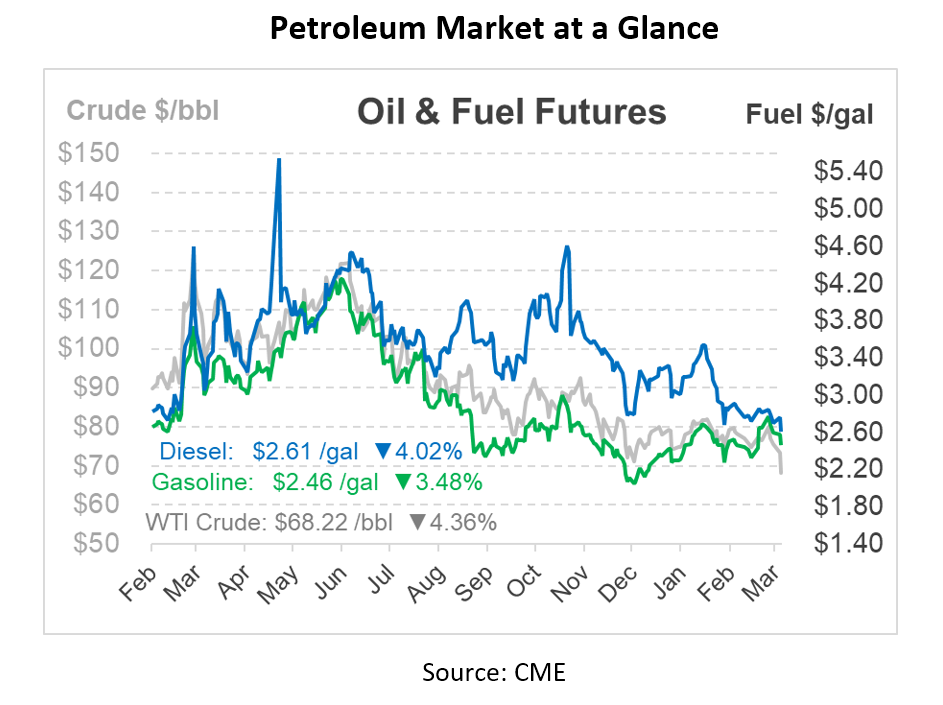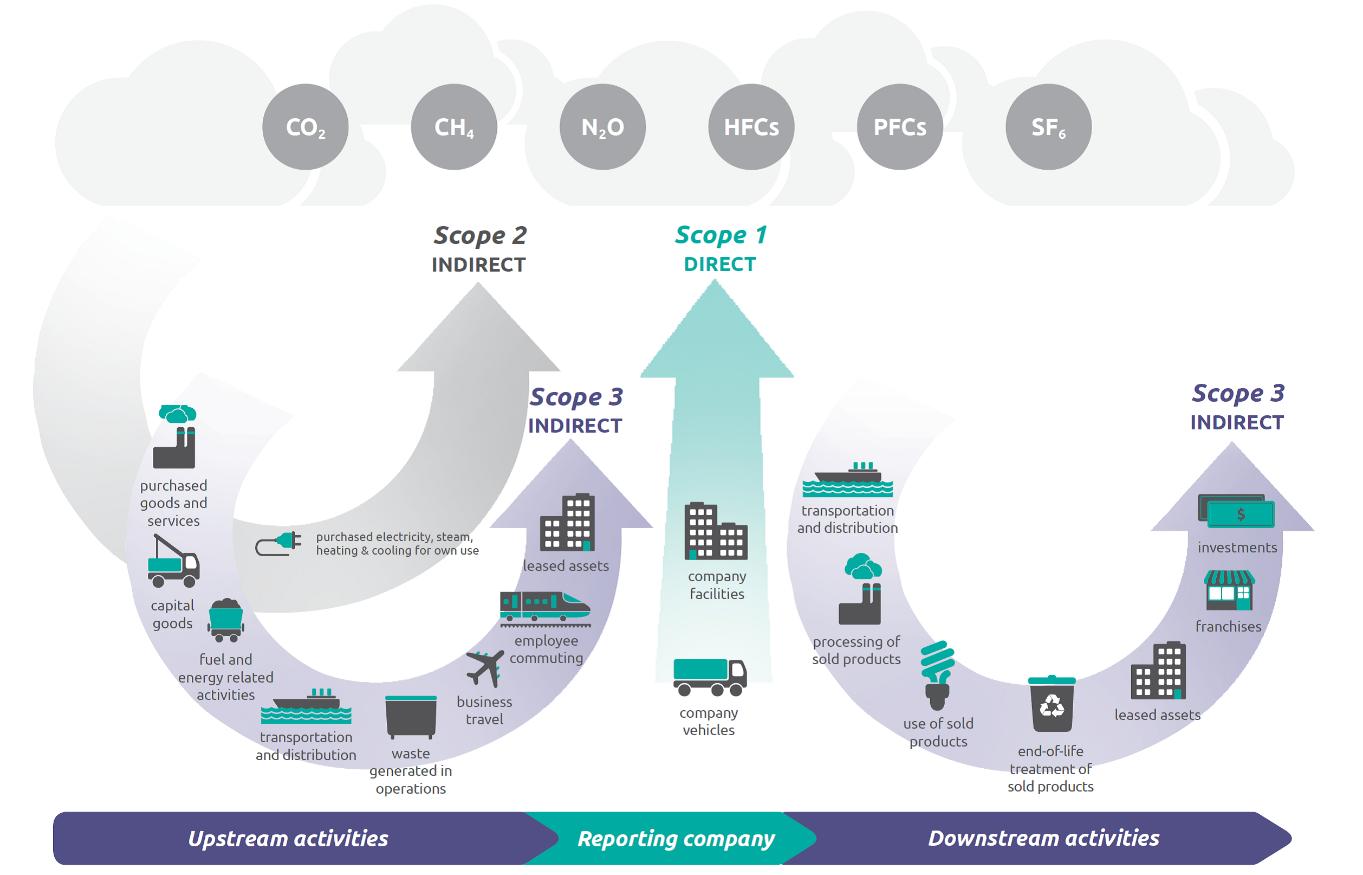
Scope 1,2,3 Emissions – What Is It
Greenhouse gas emissions (GHG) are well-known in the fuel and transportation industry since road transportation accounts for 24% of US emissions. Check the news, and you’ll see all kinds of measures being put in place to lower consumer and business emissions. But to truly lower emissions, it’s important to understand your business’s climate impact. Tracking a carbon footprint and pursuing efficiency are worthy things to do, but to limit emissions, there are more specific measurements to follow.
Are you familiar with the three categories of Scope 1, Scope 2, and Scope 3 emissions? As per the Greenhouse Gas Protocol, many businesses and organizations now disclose their reduction strategies for all three categories. This system is aimed at measuring improvements in reducing emissions. Today, we’ll explore what Scope 1, Scope 2, and Scope 3 emissions are and what they mean for your business.
What are Scope 1 emissions?
Scope 1 emissions are direct GHG emissions originating from sources owned or controlled by an organization. These emissions are typically generated from burning fossil fuels in vehicles or equipment used in manufacturing or from other on-site processes like chemical reactions that emit GHGs. Scope 1 emissions also include emissions from non-energy sources, such as fugitive emissions from oil and gas operations.
The following are a few examples of Scope 1 emissions:
- Emissions from fuel combustion in boilers or furnaces
- Emissions from vehicles owned or operated by the organization
- Emissions from refrigeration and air conditioning equipment
Scope 1 emissions are usually considered to be the most controllable emissions category for organizations. As such, they are a crucial focus area for emissions reduction efforts, especially in industries with significant carbon emissions.
What are Scope 2 emissions?
Scope 2 emissions are indirect GHG emissions that result from the generation of purchased electricity, heat, or steam that an organization consumes. These emissions are produced by external sources, such as power plants or heating systems that supply energy to an organization.
The emissions generated from the production of electricity, heat, or steam are typically measured using an emissions factor, which reflects the GHG emissions associated with the generation of a unit of energy. This factor can vary depending on the mix of energy sources used in the power grid.
The following are a few examples of Scope 2 emissions:
- Electricity purchased from the grid
- Heat or steam purchased from a district heating or cooling system
Scope 2 emissions are essential for organizations to consider in their emissions reduction strategies because they are often a significant source of emissions, especially in industries that consume large amounts of energy. Organizations can reduce their scope 2 emissions by purchasing renewable energy or investing in on-site renewable energy systems.
What are Scope 3 emissions?
Scope 3 emissions are indirect GHG emissions that result from an organization’s activities but that occur from sources outside of the organization’s control. These emissions occur throughout the value chain, including emissions generated by suppliers, the transportation of goods and services, and the use and disposal of products sold by the organization.
Scope 3 emissions are often the most difficult to quantify and control, as they are not directly associated with an organization’s operations or under its direct control. However, they can represent a significant portion of an organization’s overall carbon footprint and should be taken into account in any emissions reduction strategy.
The following are a few examples of Scope 3 emissions:
- Emissions from the production of raw materials, such as metals or chemicals used in the company’s products
- Emissions from the transportation of goods or services purchased or sold by the company
- Emissions from waste generated by the company’s products
Organizations can reduce their scope 3 emissions by working with suppliers to reduce the emissions associated with the production and transportation of goods, by improving efficiency in the supply chain, or by encouraging the use and disposal of products that generate fewer emissions.
Why do businesses have to report scope emissions?
Businesses are increasingly expected to report their GHG emissions in order to provide greater transparency and accountability for their impact on the environment. Measuring and reporting on emissions can help businesses set realistic targets for reducing their carbon footprint and track their progress over time. By voluntarily reporting on emissions, companies can demonstrate their commitment to sustainability and position themselves as leaders in their industry.
In many regions, reporting on emissions is a legal requirement, and failure to comply with these regulations can result in fines or legal action. The US Environmental Protection Agency (EPA) requires some large emitters to report on their greenhouse gas emissions, including Scope 1 and 2 emissions, under the Greenhouse Gas Reporting Program. In Canada, the federal government requires certain large emitters to report their greenhouse gas emissions under the Greenhouse Gas Reporting Program, including Scope 1 and 2.
What Does This Mean for Fleets?
Many fleets are looking for ways to lower their overall emissions. One popular approach has been Electric Vehicles, which have zero tailpipe emissions and are thus deemed “cleaner”. It’s important to look at the net effect of a fuel transition, not simply the Scope 1 emissions reduction. However, a deeper look reveals that a company is simply shifting its emissions from Scope 1 (tailpipe emissions from diesel trucks) to Scope 2 (electricity consumption, often from natural gas or coal power plants).
This article is part of Daily Market News & Insights
MARKET CONDITION REPORT - DISCLAIMER
The information contained herein is derived from sources believed to be reliable; however, this information is not guaranteed as to its accuracy or completeness. Furthermore, no responsibility is assumed for use of this material and no express or implied warranties or guarantees are made. This material and any view or comment expressed herein are provided for informational purposes only and should not be construed in any way as an inducement or recommendation to buy or sell products, commodity futures or options contracts.







